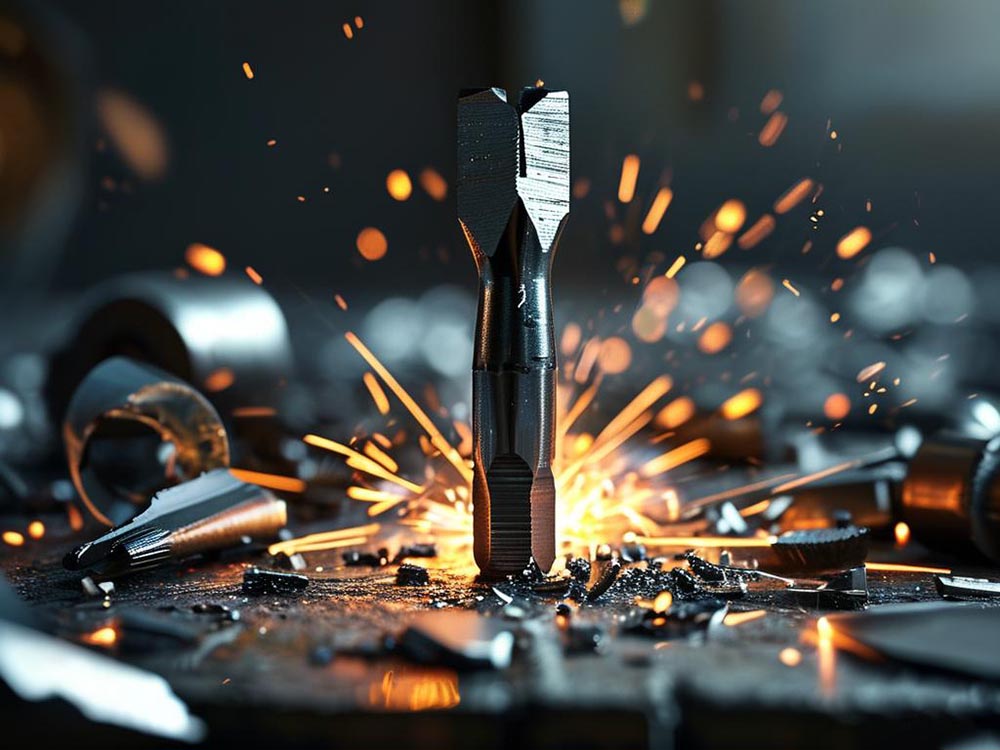In-Depth Analysis of Hardware Cutting Tool Quality Complaints and Comprehensive Improvement Solutions
Against the backdrop of a deeply restructured global manufacturing supply chain, hardware cutting tool exporters are facing increasingly complex quality challenges. Due to differences in industrial standards, usage environments, and operational habits, customer sensitivities to product quality vary significantly across regions. Based on an extensive analysis of multinational quality complaint data, this article highlights key pain points: the stringent compliance requirements in Europe and North America, corrosion issues triggered by Southeast Asia's humid climate, and accelerated wear caused by the dusty conditions in the Middle East. A targeted, three-dimensional improvement model—covering Materials, Processes, and Services—is proposed. Focusing on core issues such as local adaptation to international standards, preventive control of failure modes, and cross-cultural quality management, this study offers practical, actionable pathways for cutting tool companies to enhance product quality.
1. Statistical Overview of Common Quality Complaint Types (Based on Actual Case Studies)
1.1 Tap Products
- Thread Accuracy Deviation (40% of complaints): Customers report inconsistent thread dimensions, leading to assembly difficulties.
- Fractured Taps (30%): Tap breakage when machining hard materials like stainless steel.
- Poor Chip Evacuation (20%): Chip entanglement during operation, reducing efficiency.
1.2 Drill Products
- Hole Deviation (35%): Positional offset observed during deep hole drilling.
- Rapid Wear (28%): Cutting edges show insufficient lifespan when machining cast iron.
- Poor Surface Finish (18%): Obvious tool marks visible on hole walls.
1.3 Milling Cutter Products
- Significant Vibration (33%): Abnormal noise and vibration patterns during machining.
- Tool Deformation (25%): Slight bending after prolonged use.
- Low Machining Efficiency (20%): Customers note slower cutting speeds compared to competing brands.
2. Three-Dimensional Model for Quality Failure Analysis
2.1 Material Dimension
- Typical Issues:
- HSS-E steel hardness fluctuations of ±1.5 HRC (requirement: ≤±0.8 HRC).
- Excessive porosity in carbide substrates (measured at 0.3% vs standard 0.1%).
- Testing Methods:
- Metallographic analysis (400x microscopy to observe carbide distribution).
- Direct-reading spectrometer to monitor composition deviations (e.g., molybdenum content fluctuation ±0.15%).
2.2 Process Dimension
| Process | Key Parameter | Common Deviation |
|---|
| Heat Treatment | Austenitizing Temperature | ±10°C deviation leading to excessive retained austenite |
| Grinding | Abrasive Grit Matching | Coarse grit causing micro-chipping at cutting edges |
| Coating | Deposition Temperature Uniformity | 15°C variance reducing coating adhesion strength |
2.3 Usage Dimension
- Top 3 Customer Misoperations:
- Exceeding recommended spindle speed by 20%, causing built-up edge formation (42% of issues).
- Dry cutting of hard materials (against operation specifications).
- Incorrect clamping length, leading to radial runout.
3. Regional Market Complaint Characteristics and Countermeasures
3.1 Europe and North America
- Typical Issues:
- Strict requirements for product certification documentation (e.g., missing CE/ROHS certifications).
- Compatibility issues with older machining equipment.
- Improvement Measures:
- Implement a certification pre-audit mechanism.
- Provide a compatibility cross-reference guide for machine models.
3.2 Southeast Asia
- Special Pain Points:
- Tool rusting due to humid climate, exacerbated by inadequate packaging during sea transport.
- Non-standard usage practices by local operators leading to excessive wear.
- Solutions:
- Upgrade to rust-proof packaging (vacuum-sealed plus desiccant dual-layer protection).
- Provide multilingual illustrated quick-start operation manuals.
3.3 Middle East
- High-Frequency Complaints:
- Accelerated tool wear due to dusty environments.
- Project delays caused by extended delivery cycles.
- Optimization Plans:
- Develop dust-resistant coating technologies.
- Establish a logistics hub in Dubai to shorten delivery lead times.
4. End-to-End Quality Improvement Framework
4.1 Design Optimization
- Build a regional materials database (parameters for 56 types of internationally standardized steels).
- Develop adaptive cutting edge profile design software (automatically matches customer working conditions).
4.2 Production Control
- Critical Process Monitoring List:
- Grinding Process: Mandatory wheel dressing every 50 parts.
- Coating Process: Regular calibration of target distance (tolerance ±0.05 mm).
- Inspection Process: CMM random sampling inspection (≥5% full-dimension inspection per batch).
4.3 Service Innovation
- Smart After-Sales System Modules:
- AI-based Working Condition Diagnosis Assistant (automatically recommends solutions based on inputted material/machine/parameter data).
- Tool Life Prediction Algorithm (provides early replacement warnings 30 days in advance).
- Online Process Optimization Service (real-time video coaching for parameter adjustments).
5. Cross-Cultural Communication Strategies
5.1 Europe and North America
- Technical Buyer Characteristics:
- Require full original inspection reports (do not accept simplified versions).
- Prefer formal communication via email (avoid instant messaging tools).
- Suggested Language:
- "According to Clause 5.2 of EN ISO 529:2018, we have adjusted the heat treatment curve accordingly..."
5.2 Middle East
- Relationship-Based Procurement Features:
- Emphasize face-to-face meetings (at least one technical exchange visit annually).
- Lengthy decision cycles requiring persistent follow-up.
- Key Considerations:
- Avoid pushing orders during Ramadan.
- Provide bilingual English/Arabic contracts.
6. Practical Improvement Case Study
Case: Addressing Rapid Drill Wear for an Indian Customer
- Problem Recurrence: Tool life only reached 60% of the promised value when drilling aluminum castings.
- Root Cause: Customer used water-based coolant, causing cutting edge corrosion.
- Solutions:
- Recommended switching to oil-based coolant.
- Adjusted the drill point angle (from 118° to 135°).
- Sent corrosion-resistant coated samples for free testing.
- Improvement Result: Tool life increased by 1.8 times.
7. Conclusion
The essence of quality control for hardware cutting tools lies in achieving precise supply through technological upgrades and cultural adaptation. This analysis shows that overcoming international customer complaints requires breaking away from traditional quality control mindsets and establishing a full-chain quality prevention system. On the technical side, it is critical to simultaneously enhance material heat treatment stability, digital inspection precision, and smart service systems. On the management side, companies should build regional quality databases and implement dynamic standard mapping mechanisms. Practical experience shows that integrating 12 key technical improvements—such as optimized high-pressure gas quenching, dust-resistant coating development, and working condition matching algorithms—can reduce typical quality complaint rates by 35% to 67%. It is recommended that enterprises take customer working conditions as the starting point and continuously perfect a quality ecosystem based on “Design Prevention – Production Monitoring – Service Correction” to gain differentiated advantages in global competition.




 We like to do design according to all the customers' requirements, or offer them our new designs. With strong OEM/ODM capabilities, we can fill your sourcing demands.
We like to do design according to all the customers' requirements, or offer them our new designs. With strong OEM/ODM capabilities, we can fill your sourcing demands.